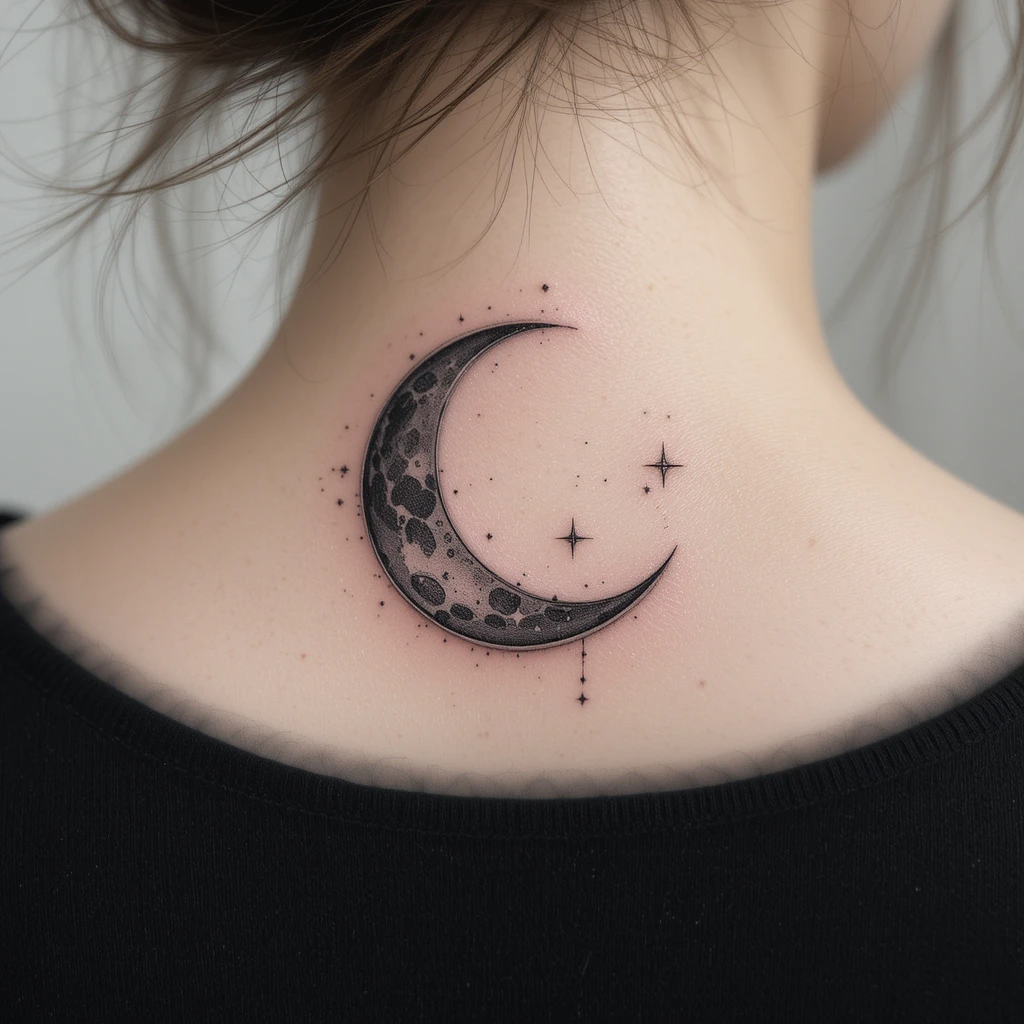In the vast constellation of tattoo symbolism, few celestial bodies capture the human imagination as powerfully as the moon. These luminous designs—featuring crescents adorned with intricate crater details, surrounded by dancing stars and cosmic dust—transform the skin into a personal observatory where ancient wisdom meets contemporary artistry. Far from simple astronomical representations, lunar tattoos embody humanity’s deepest connections to cycles, intuition, and the mystical forces that govern both earthly tides and the tides of the soul.
The Moon’s Eternal Hold on Human Consciousness
Since humanity first gazed upward at the night sky, the moon has served as timekeeper, deity, and muse. Ancient civilizations structured their calendars around lunar cycles, while countless cultures worshipped moon deities who governed everything from fertility and harvest to wisdom and magic.
“The moon represents our most primal relationship with time and change,” explains archaeoastronomer Dr. Helena Starbridge. “Unlike the sun’s steady presence, the moon visibly transforms night after night, making it the perfect symbol for life’s cyclical nature. When someone chooses a lunar tattoo, they’re connecting to thousands of years of human fascination with transformation and renewal.”
This deep cultural resonance explains why moon tattoos transcend simple aesthetic choices, becoming personal talismans that speak to our fundamental relationship with change, growth, and the mysterious forces that shape our inner lives.
The Symbolic Language of Lunar Phases
Contemporary lunar tattoos draw their power from rich layers of meaning embedded in moon phase symbolism:
The Crescent Moon: Represents new beginnings, manifestation, and the fertile potential of fresh starts. Its curved form suggests both a protective embrace and an open vessel ready to receive cosmic energy.
Waxing Phases: Symbolize growth, intention-setting, and the gradual building of personal power. These phases speak to patience and trust in natural timing.
Full Moon: Embodies culmination, illumination, and the peak of psychic and emotional energy. Associated with revelation, celebration, and the full expression of one’s authentic self.
Waning Phases: Represent release, forgiveness, and the wisdom gained through letting go. These phases honor the necessity of endings that make space for new beginnings.
“Moon phase tattoos serve as constant reminders that everything in life is cyclical,” notes spiritual counselor and lunar enthusiast Marina Nightfall. “They help us remember that difficult phases are temporary and that periods of darkness naturally give way to illumination. There’s profound comfort in wearing that cosmic wisdom on your skin.”
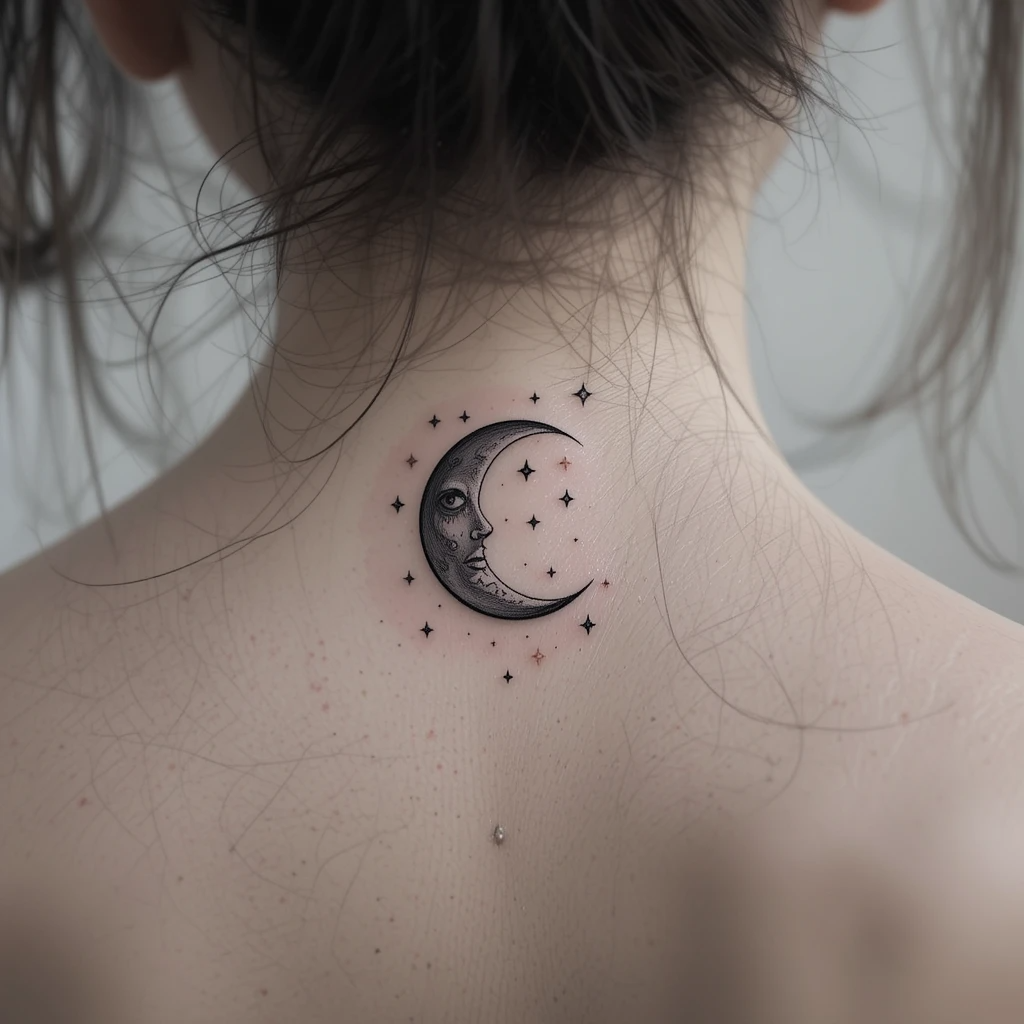
Artistic Elements and Visual Poetry
Modern lunar tattoos employ sophisticated artistic techniques that transform simple celestial imagery into compelling visual narratives:
Crater Detailing: Intricate surface textures that acknowledge the moon’s scarred beauty, suggesting that imperfections can be sources of profound beauty and character.
Stellar Surroundings: Carefully placed stars and cosmic dust that create atmospheric depth while emphasizing the moon’s place in the vast celestial dance.
Scale and Proportion: The interplay between intimate tattoo placement and cosmic vastness creates powerful visual metaphors about our connection to something greater than ourselves.
Shadow and Light Play: Masterful use of shading that captures the moon’s luminous quality while maintaining the tattoo’s impact in various lighting conditions.
Geometric Integration: Some designs incorporate sacred geometry or mandala elements that enhance the spiritual aspects of lunar symbolism.
“Creating a compelling lunar tattoo requires understanding light in ways that go beyond basic shading,” explains celestial tattoo specialist Aurora Inkwell. “You’re trying to capture something that literally generates light—the technical challenge is making black ink on skin appear luminous and alive.”
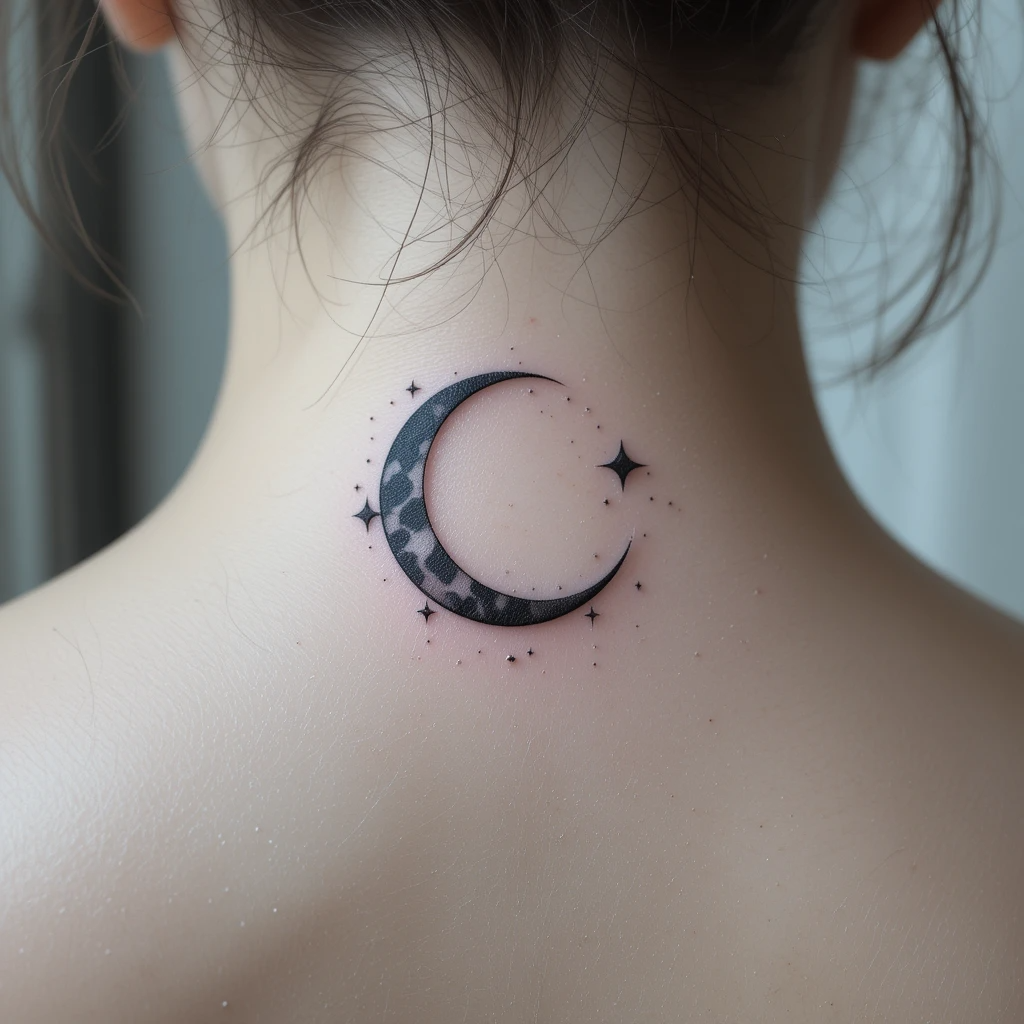
Technical Mastery in Celestial Art
Executing exceptional lunar tattoos demands specialized artistic skills and deep understanding of astronomical accuracy:
- Astronomical Precision: Accurate phase representations require knowledge of actual lunar appearances and positioning
- Light Source Consistency: All shadowing must align with the implied cosmic light source to maintain visual believability
- Texture Differentiation: Distinguishing between lunar surface, surrounding space, and stellar elements through varied line work and shading
- Compositional Balance: Arranging celestial elements to create visual harmony without overwhelming the central lunar focus
- Scale Sensitivity: Ensuring intricate details remain visible and impactful at the tattoo’s intended size
- Atmospheric Effects: Creating the sense of cosmic depth and the moon’s ethereal glow through advanced shading techniques
“The biggest challenge is capturing the moon’s three-dimensional quality on a two-dimensional surface,” notes award-winning tattoo artist Cosmos Blackstar. “You need to understand how light behaves in space, how craters cast shadows, and how to make something appear to glow without using actual light sources.”
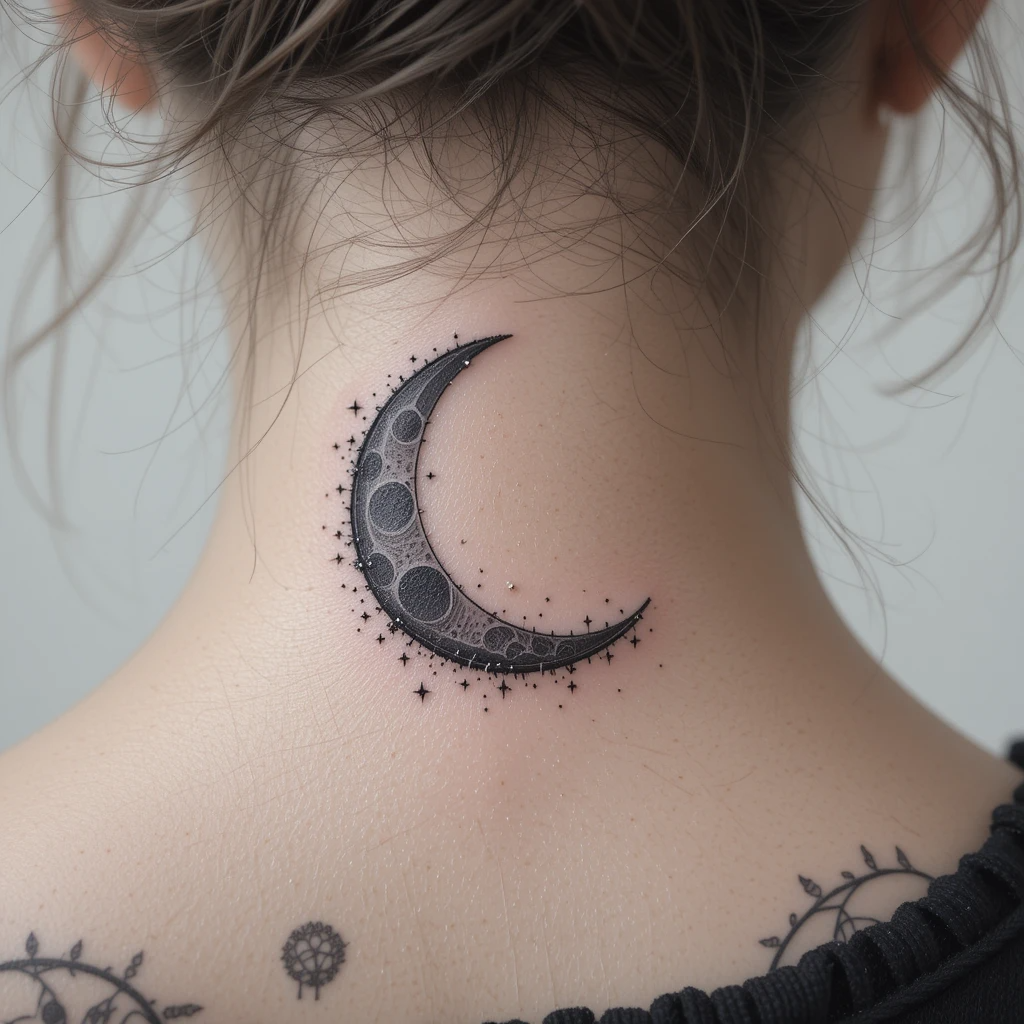
Cultural Variations and Mythological Connections
While lunar symbolism appears across all cultures, different traditions bring unique perspectives to moon tattoo imagery:
Greek and Roman Traditions: Feature goddesses like Artemis and Diana, emphasizing the moon’s connection to feminine power, hunting, and wild independence.
Celtic Mythology: Introduces concepts of the triple moon goddess and the sacred relationship between lunar cycles and earthly seasons.
Eastern Philosophy: Incorporates concepts of yin energy, meditation, and the moon’s role in balancing solar masculine forces.
Indigenous Traditions: Honor the moon as grandmother, storyteller, and keeper of women’s mysteries, emphasizing respect for natural cycles.
Contemporary Paganism: Blends various traditions to create personalized lunar spirituality that often finds expression in tattoo form.
“What’s fascinating about modern lunar tattoos is how they allow people to create their own mythologies,” observes cultural anthropologist Dr. Selene Moonwright. “Someone might combine Celtic knotwork with astronomical accuracy and personal symbolism to create something that honors tradition while expressing individual spiritual beliefs.”
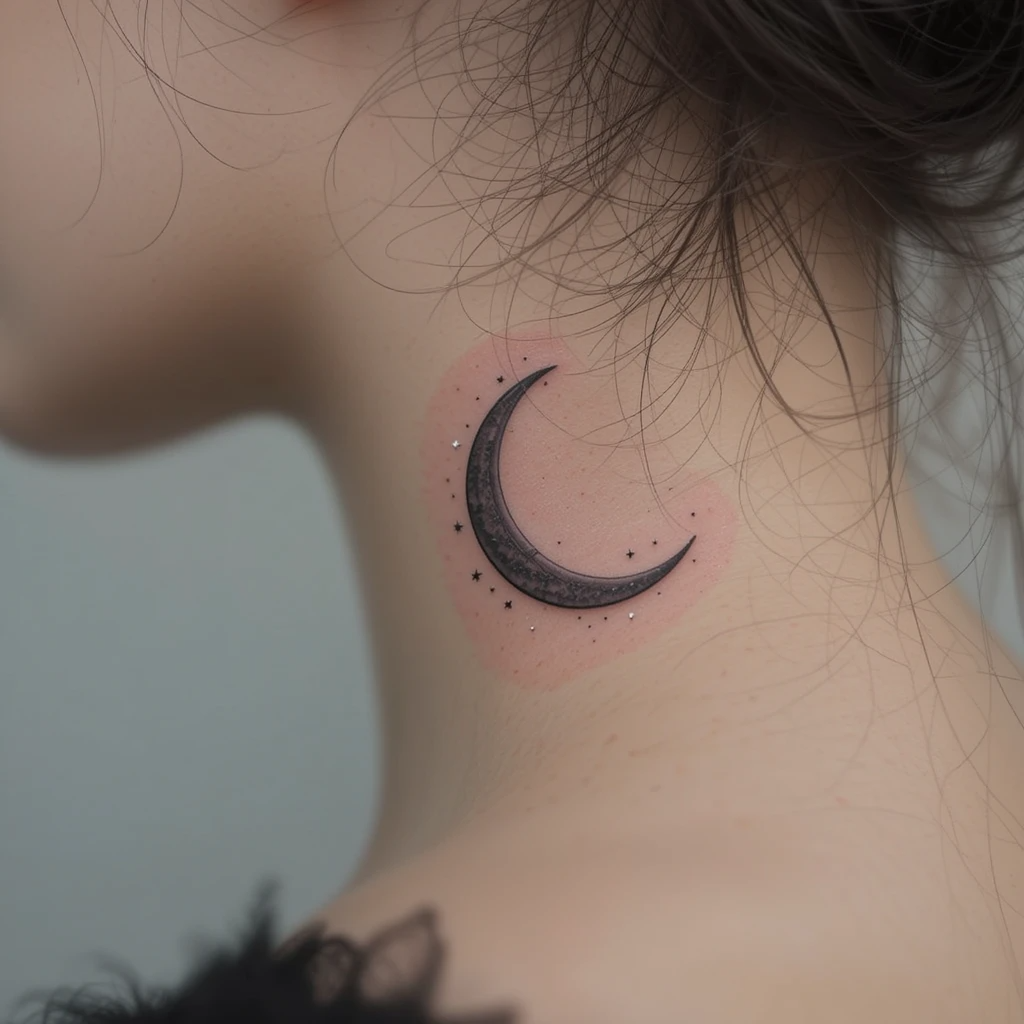
Personal Meaning and Life Transitions
For many recipients, lunar tattoos mark significant life passages or serve as ongoing sources of guidance and comfort:
“I got my crescent moon tattoo during a major life transition,” shares tattoo recipient Sarah Crescentia. “I was leaving a marriage, starting a new career, and essentially rebuilding my entire identity. The moon reminded me that change is natural and that new phases of life can be just as beautiful as what came before.”
Others choose lunar designs to honor their connection to nature, mark recovery from illness, celebrate feminine energy, or simply acknowledge their fascination with astronomy and space exploration.
The Psychology of Celestial Connection
Choosing to permanently mark one’s body with lunar imagery reflects deeper psychological needs and spiritual aspirations:
“Lunar tattoos often appeal to people who feel deeply connected to natural cycles and cosmic rhythms,” explains depth psychologist Dr. Luna Shadowmere. “They provide a way to carry that connection with you always, serving as daily reminders to honor your own cycles of growth and rest, expansion and contraction. There’s something profoundly grounding about wearing a symbol of cosmic constancy.”
This psychological framework helps explain why lunar tattoos often bring their wearers a sense of peace and perspective, serving as anchors during turbulent times and reminders of life’s greater patterns.
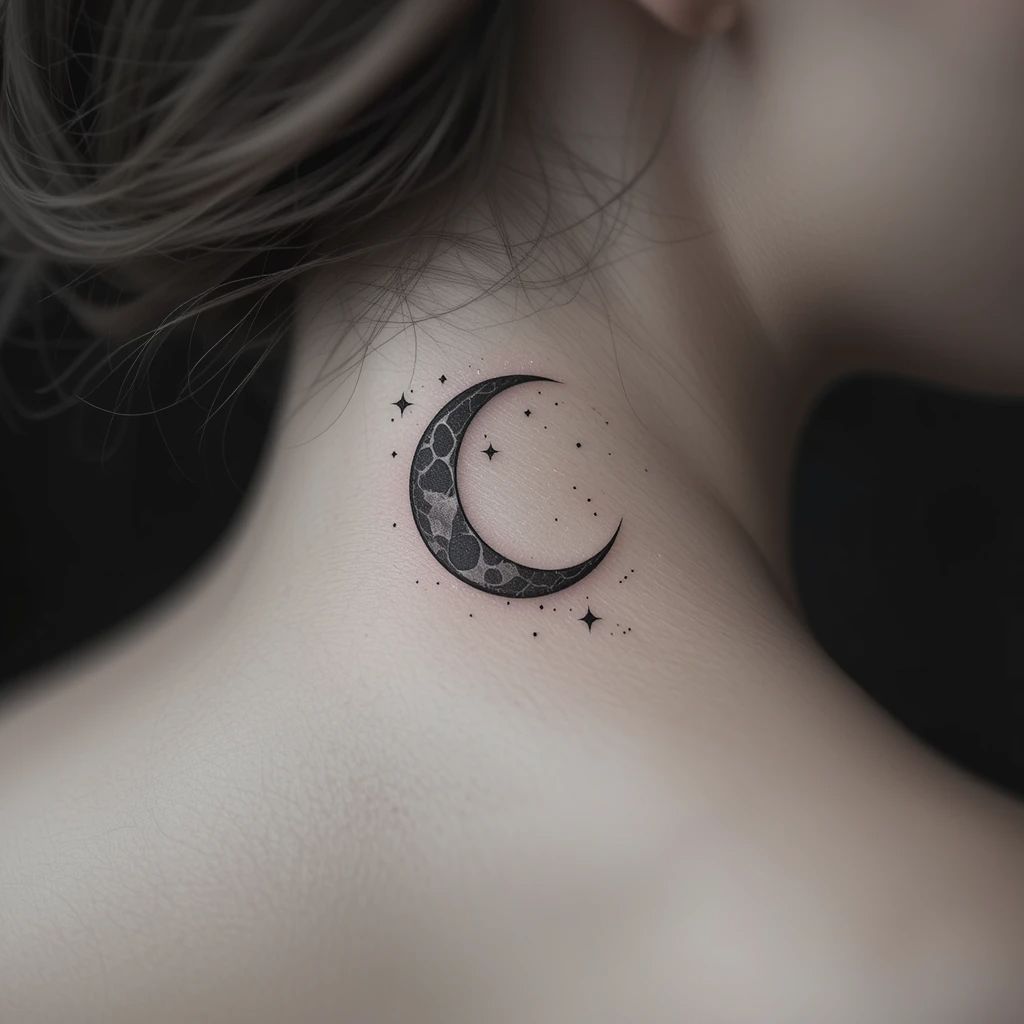
Placement Considerations and Lifestyle Integration
The intimate nature of lunar tattoos makes placement particularly significant:
Neck Placement: Creates striking visual impact while allowing for easy concealment when necessary, making these designs popular for professional environments.
Visibility and Privacy: The ability to show or hide lunar tattoos makes them appealing to those who want meaningful body art without constant public display.
Movement and Flow: Curved neck lines complement the crescent moon’s natural arc, creating harmonious integration between body and design.
Personal Viewing: Neck placement allows wearers to see their lunar companion in mirrors, creating daily moments of connection and reflection.
“Placement becomes part of the tattoo’s meaning,” notes body art consultant Dr. Stella Positioning. “A moon on the neck suggests something you want close to your thoughts and breath, while other placements might emphasize different aspects of lunar symbolism.”
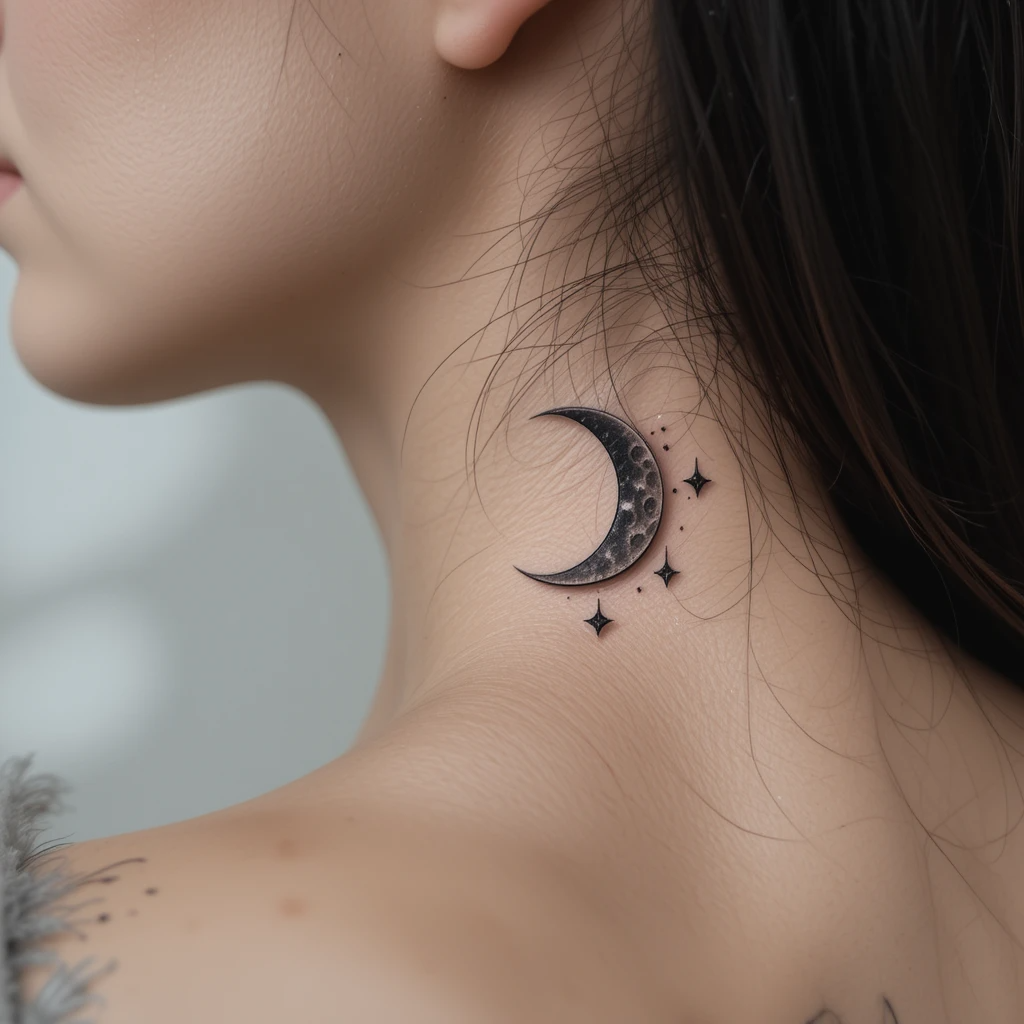
Caring for Your Celestial Companion
Lunar tattoos, with their intricate shading and delicate star details, require careful aftercare to maintain their cosmic beauty:
Initial Healing: The detailed work in lunar tattoos means following aftercare instructions precisely to preserve fine line work and subtle shading gradients.
Long-term Maintenance: Regular moisturizing helps maintain the contrast between light and dark areas that gives these tattoos their luminous quality.
Sun Protection: Ironically, these moon-inspired pieces need protection from their celestial counterpart to prevent fading of the detailed work.
“I think of caring for my moon tattoo as a form of daily ritual,” explains tattoo recipient Marcus Nightsky. “Each time I apply moisturizer or sunscreen, I’m reminded of the intention behind the piece and my commitment to honoring natural cycles in my own life.”
The Future of Lunar Artistry
As tattoo techniques continue advancing, lunar designs are finding new expressions through innovative approaches:
Photorealistic Renderings: High-resolution reference images from space missions allow for unprecedented astronomical accuracy in tattoo design.
Glow-in-the-Dark Elements: Some artists incorporate phosphorescent inks that literally make moon tattoos glow in darkness, creating magical surprise elements.
3D Techniques: Advanced shading methods can make lunar surfaces appear to rise from the skin, creating dimensional effects that enhance the cosmic impact.
Interactive Designs: Some pieces incorporate elements that change appearance based on lighting or angle, mimicking the moon’s actual phase changes.
“We’re seeing incredible innovation in how cosmic themes can be rendered in tattoo form,” notes industry analyst Dr. Cosmos Inkwright. “The fundamental appeal of lunar symbolism remains constant, but the artistic possibilities continue expanding as techniques evolve.”
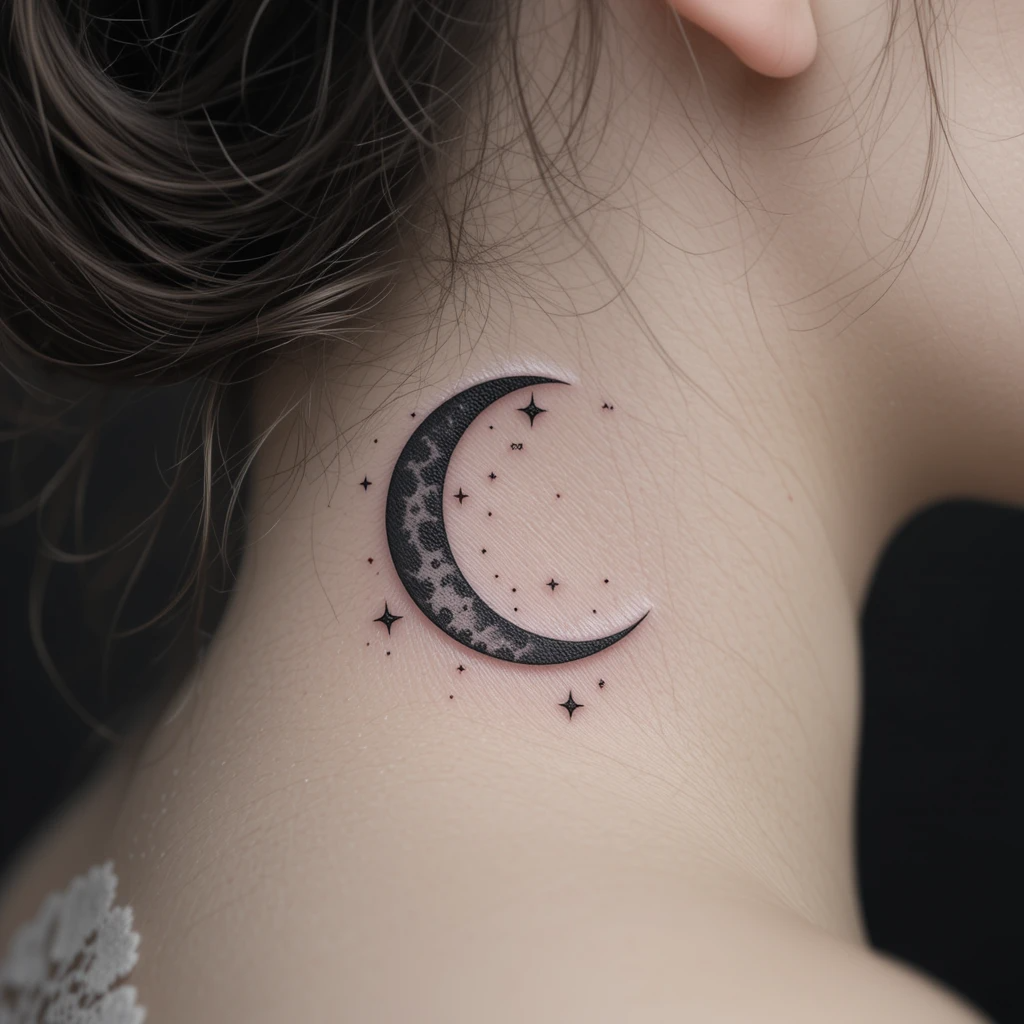
Seasonal Connections and Natural Rhythms
Many lunar tattoo enthusiasts find their pieces take on different meanings throughout the year:
“My crescent moon tattoo feels different in each season,” observes wearer Jennifer Moonbeam. “In spring, it reminds me of new growth and fresh possibilities. During winter, it becomes a symbol of endurance and the promise that light will return. The same image carries me through different emotional and spiritual seasons.”
This seasonal resonance adds layers of meaning that unfold over time, making lunar tattoos gifts that keep giving throughout the wearer’s journey.
Living in Lunar Rhythm
Perhaps the most profound aspect of lunar tattoos is how they encourage wearers to recognize and honor natural cycles in their own lives. In a culture that often demands constant productivity and linear progress, these celestial companions offer gentle reminders of the wisdom in cyclical living.
Those who choose to adorn their bodies with lunar imagery make statements about their relationship with time, change, and the mysterious forces that influence human experience. They declare allegiance to ancient wisdom while embracing contemporary artistic expression, creating personal talismans that bridge earthly existence with cosmic wonder.
As these luminous designs continue evolving through modern tattoo artistry, lunar tattoos remind us that some symbols transcend time and culture. The moon that inspired our ancestors continues to influence tides, hearts, and imaginations, offering its steady presence as a source of comfort, guidance, and endless fascination.
Whether rendered as delicate crescents or detailed astronomical studies, these celestial companions invite us to remember our place in the vast cosmic dance while honoring the intimate rhythms that govern our personal journeys. In choosing to wear the moon, we carry with us an eternal reminder that change is not only inevitable but beautiful—and that even in our darkest phases, the light is always returning.

